The DIY Van Life Essential: Building Your Own Water Transfer Pump
Hey everybody, Matt here for AVC and welcome back to AVC Chronicles!
One of the persistent challenges of van life, especially when boondocking or exploring remote areas, can be finding a reliable hose bib to fill your water system. If you've ever tried to fill up in places like Moab, you know exactly what I'm talking about – it can be tough!
Today's project is all about solving that problem. We're going to build a DIY water transfer pump that allows you to easily fill your van's water tank from a jerry can, a bucket, or any other water source, all without needing a traditional garden hose hookup. It's a quick and simple assembly of parts that will make your adventures much smoother!
The Essential Components

Let's break down what you'll need to build your own transfer pump:
-
Submersible Water Pump: This is the heart of your system. Crucially, make sure you get one that is safe for drinking water. Many submersible pumps exist, but not all are rated for potable water. The red, white, and blue ones are typically safe.
-
12V Socket Adapter with On/Off Switch: This makes powering your pump incredibly easy. We love the ones with a push-button switch – simply plug it into your van's cigarette lighter outlet (we often install a 12V outlet near our water tanks for this very reason), drop the pump in your water source, and hit the button! No complex wiring needed.
-
Food-Safe Hose: You'll need about 5 feet of hose to connect your pump to your van's water fill port. We recommend silicone hose (like those used for brewing) because it's food-safe, less prone to kinking than clear vinyl, and less likely to impart any plastic taste to your water.
-
Garden Hose Adapter: This is a standard repair fitting you'd use for a garden hose, but it's essential for connecting to your van's water fill port. If you're using an Aquaore fill port (which we do), this is the adapter you'll need.
-
Electrical Connectors: A few crimp-on spade fittings (male and female) are perfect for connecting the pump's lead to the 12V socket adapter. You could also use butt splices or WAGOs if preferred.
-
Hose Clamp: One stainless steel hose clamp is needed to secure the silicone tubing to the submersible pump's outlet barb.
Tools for the Job

You won't need a full workshop for this project:
-
Wire Strippers/Crimpers: To prepare and connect your electrical wires.
-
Phillips Head Screwdriver: For the hose clamp.
-
Heat Gun/Torch: If you're using heat-shrink electrical terminals for a more durable, watertight seal (highly recommended!).
Step-by-Step Assembly
Let's get this transfer pump built!
1. Prepare Your Electrical Connections:

-
Strip about 3/8ths of an inch of insulation from the ends of the pump's wires and the 12V socket adapter's wires. Twist the exposed copper strands.
-
Crimp a female spade connector onto each wire of the 12V socket adapter.
-
Crimp a male spade connector onto each wire of the submersible pump's lead.
-
If using heat-shrink connectors (which we highly recommend for durability and water resistance), apply heat with your torch or heat gun until the glue inside flows and the insulation shrinks tightly around the wire.
2. Assemble the Hose to the Garden Hose Adapter:

-
Disassemble your garden hose repair fitting.
-
Slide the main body of the adapter over one end of your silicone tubing.
-
Slide the small vice clamp (from the adapter kit) over the tubing, ensuring it's positioned to secure the tubing onto the adapter's barb.
-
Tighten the screws on the clamp securely.
-
Don't forget to insert the O-ring into the garden hose adapter for a watertight seal.
3. Attach the Hose to the Submersible Pump:

-
Locate the one-way check valve with a pre-filter (a small particulate filter) that usually comes with the submersible pump. This will help keep sediment out of your water system. Push this onto the pump's outlet fitting.
-
Slide your stainless steel hose clamp onto the other end of your silicone tubing.
-
Push the silicone tubing firmly over the barb on the check valve/pre-filter.
-
Slide the hose clamp over the connection and tighten it securely with your Phillips head screwdriver.
-
(Optional) You can bend the excess hose clamp around your wiring to keep the two components together.
4. Final Electrical Connection & Optional Aquaore:

-
Once your heat-shrink electrical connections have cooled, simply plug the male spade connectors from the pump into the female spade connectors from the 12V socket adapter. (Typically, black connects to brown and blue connects to red, but always double-check your specific wiring colors).
-
(Optional, but recommended if you use Aquaore) If you have a spare Aquaore spigot, connect it to your garden hose adapter. This keeps your system neat and ensures quick, dedicated connections. If not, you can simply use this new pump with your regular fill hose.
Pump Up Your Water System!

Now, you have your assembled water transfer pump ready to go!
-
Place your jerry can (or bucket) full of water on the ground.
-
Drop the submersible water pump into the water source.
-
Connect the garden hose adapter (or Aquaore fitting) to your van's water fill port.
-
Open the water fill valve on your van.
-
Plug the 12V socket adapter into your van's cigarette lighter outlet and press the on button.
You'll see the water being pumped into your system – often with no bubbles, making it look quite uneventful, but it's working!
If you'd like to build this handy project for yourself, take a look at the link below; we'll have all the parts listed so you can order them up. Otherwise, we'll see you on the next one!


